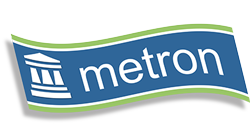It's time to stop guessing and start testing.
vSphere 5 is the most popular x86-virtualization platform, and exciting enhancements keep coming with each new release.
Hyper-V from Microsoft is also a popular solution for server virtualization on the x86 platform, and it has become even more so with the addition of advanced features in service pack one.
The fact that Hyper-V is included with Windows, also make it attractive from a cost perspective.
Understanding the performance aspects of these virtual environments is important to ensuring that you get maximum benefit from your virtualization investments.
The usual way to test performance between platforms is through benchmarking. However, benchmarking a virtual environment presents challenges that do not exist when benchmarking non-virtualized systems.
Many additional variables are introduced related to caching, mapped IO, workload mixing, etc... The added complexity can make it difficult to get at the truth, and make it easier to hide the truth. The ideal benchmark would incorporate real production workloads, which in most cases is not feasible.
An alternative is to utilize generic benchmarks that approximate production workloads.
We're running a free to attend webinar session where we'll be making a general performance comparison between vSphere and Hyper-V, across all major components using identical generic benchmarking tools. Virtualization specific performance metrics available in both environments will also be examined.
A basic understanding of the hypervisor architecture is important when evaluating performance data. Architectures will be compared and related to available metrics and important differences in architecture and terminology will be discussed.
Benchmark results from both environments will be presented, along with conclusions that can be made from the findings.
We'll be discussing what may be lacking and we'll be covering :
Architecture review
Metrics available
Challenges of benchmarking virtual environments
Testing environment and benchmarks
Methods and objectives
Results and conclusions
This session will be followed in February by athene® Live! and will feature the actual benchmarking, analyzed with athene®. As always your feedback from the webinar will be directly incorporated in to the athene® Live! session.
Why not join us on January 26 as we compare two of the most popular x86-virtualization platforms in use. Register for this Webinar
Also look out for a new blog series on Capacity Management starting this Wednesday.
Adam Grummitt, Metron Distinguished Engineer, winner of the prestigious Michelson award and author of 'Capacity Management: A Practitioner Guide '
VP, Strategic Marketing
vSphere 5 is the most popular x86-virtualization platform, and exciting enhancements keep coming with each new release.
Hyper-V from Microsoft is also a popular solution for server virtualization on the x86 platform, and it has become even more so with the addition of advanced features in service pack one.
The fact that Hyper-V is included with Windows, also make it attractive from a cost perspective.
Understanding the performance aspects of these virtual environments is important to ensuring that you get maximum benefit from your virtualization investments.
The usual way to test performance between platforms is through benchmarking. However, benchmarking a virtual environment presents challenges that do not exist when benchmarking non-virtualized systems.
Many additional variables are introduced related to caching, mapped IO, workload mixing, etc... The added complexity can make it difficult to get at the truth, and make it easier to hide the truth. The ideal benchmark would incorporate real production workloads, which in most cases is not feasible.
An alternative is to utilize generic benchmarks that approximate production workloads.
We're running a free to attend webinar session where we'll be making a general performance comparison between vSphere and Hyper-V, across all major components using identical generic benchmarking tools. Virtualization specific performance metrics available in both environments will also be examined.
A basic understanding of the hypervisor architecture is important when evaluating performance data. Architectures will be compared and related to available metrics and important differences in architecture and terminology will be discussed.
Benchmark results from both environments will be presented, along with conclusions that can be made from the findings.
We'll be discussing what may be lacking and we'll be covering :
This session will be followed in February by athene® Live! and will feature the actual benchmarking, analyzed with athene®. As always your feedback from the webinar will be directly incorporated in to the athene® Live! session.
Why not join us on January 26 as we compare two of the most popular x86-virtualization platforms in use. Register for this Webinar
Also look out for a new blog series on Capacity Management starting this Wednesday.
Adam Grummitt, Metron Distinguished Engineer, winner of the prestigious Michelson award and author of 'Capacity Management: A Practitioner Guide '
will
be considering all practical aspects involved in trying to make capacity
management effective.
Rich FronheiserVP, Strategic Marketing

